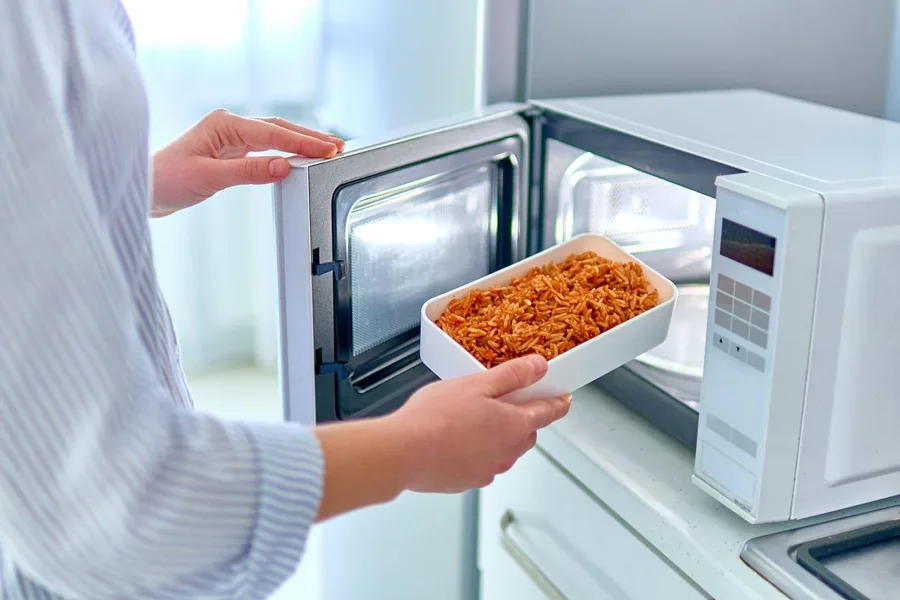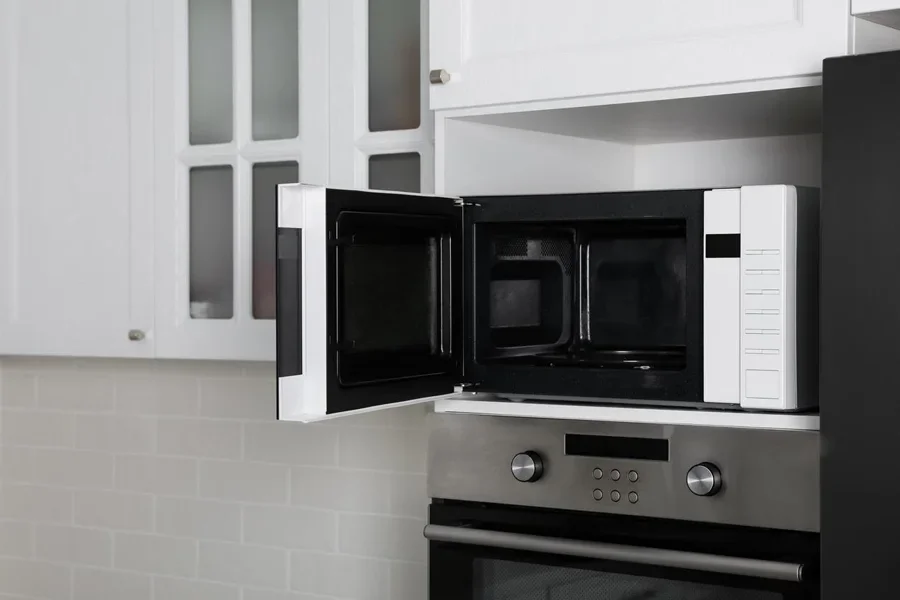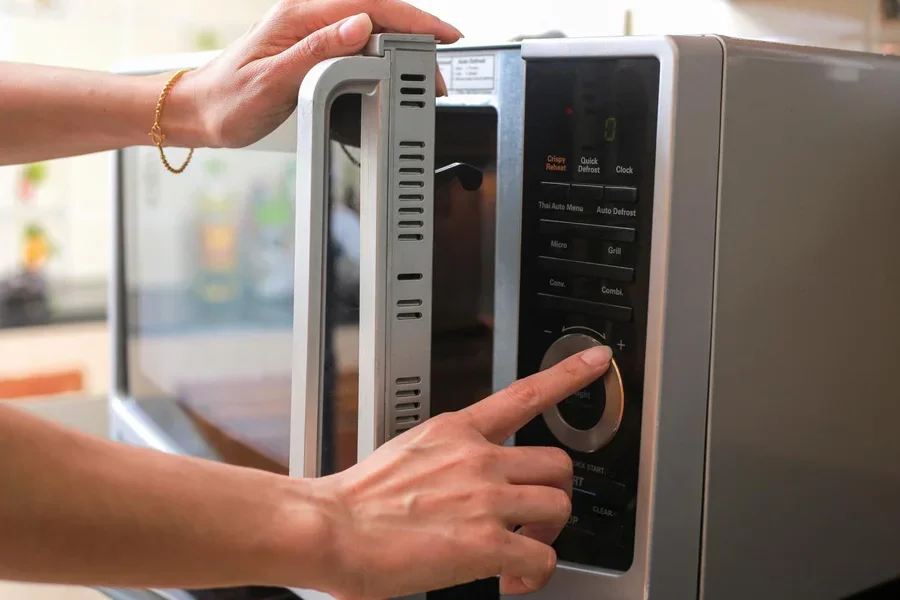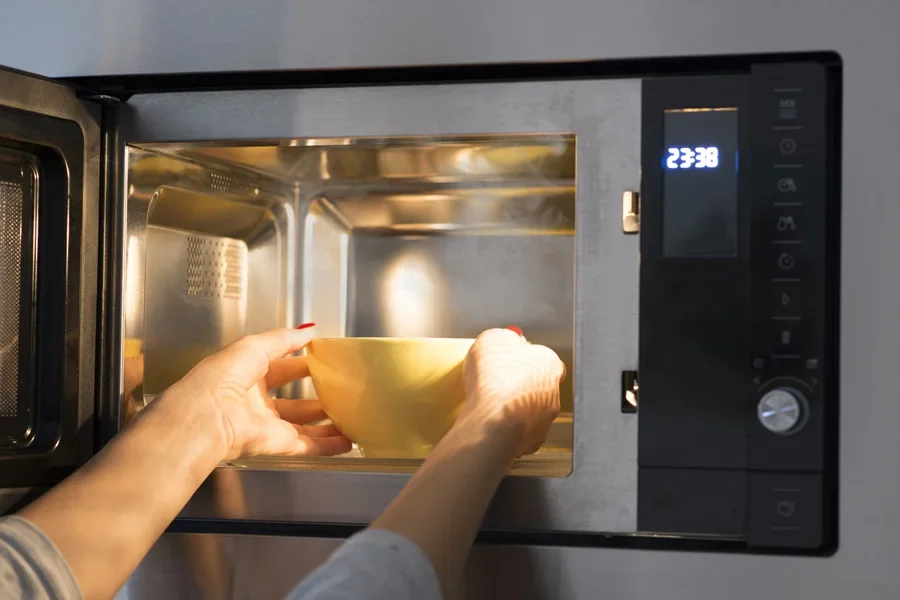Table of Contents
1. Introduction
2. Main types and usage of microwave ovens
3. Market overview and key trends
4. Essential factors for choosing cookware sets
5. Top microwave models and their features in 2025
6. Conclusion
Introduction
Selecting the right microwave oven in 2025 is essential for maintaining efficiency and performance in professional kitchens and work environments. Microwave ovens offer versatile cooking, reheating, and defrosting options, streamlining food preparation processes in a wide range of business settings. With technological advancements such as smart connectivity and multifunctional features, modern microwaves are designed to enhance convenience and speed while reducing energy consumption. Whether for a commercial kitchen or an office space, choosing a model with the appropriate size, power, and capabilities can significantly improve operational productivity and ensure consistent results.
Main types and usage of microwave ovens

Countertop microwaves
Countertop microwaves are versatile, portable appliances that fit easily on kitchen counters. They require no installation beyond plugging into an electrical outlet, making them ideal for quick and efficient heating, reheating, and defrosting. While convenient, they can take up valuable counter space, which may be a consideration in smaller kitchens. Their portability allows them to be moved around easily, making them a flexible option for businesses that may need microwaves in various locations within the workspace. Most countertop models range from basic to advanced, offering features like sensor cooking and inverter technology for even heating.
Over-the-range microwaves
Over-the-range microwaves are designed to save counter space by being installed above a cooktop or range. In addition to functioning as a microwave, they often double as a venting system, helping to remove steam, smoke, and odors from the cooktop below. This dual-purpose makes them a practical solution for businesses where kitchen space is at a premium, and ventilation is necessary. However, over-the-range models require professional installation and may not be as accessible as countertop models, particularly for staff who may have difficulty reaching higher-mounted appliances. They are also generally more expensive due to their integrated exhaust systems.
Built-in microwaves
Built-in microwaves are integrated directly into kitchen cabinetry, providing a sleek, space-saving option that blends seamlessly with kitchen designs. Ideal for businesses looking to maintain a modern or high-end kitchen aesthetic, built-in microwaves free up counter space and create a clean, cohesive look. These models often come with advanced features and are customizable to fit specific kitchen layouts. However, they are less portable and require a dedicated installation space, making them a more permanent solution compared to countertop models.
Commercial microwaves

Commercial microwaves are built for heavy-duty use in high-traffic environments like restaurants, cafeterias, or corporate kitchens. These microwaves typically have higher wattage and larger capacities to handle large volumes of food quickly and efficiently. Unlike standard models, commercial microwaves are designed to withstand frequent use and often come with simplified control panels for speed and ease in busy settings. Their robust construction makes them more durable, but they are usually more expensive than household models due to their enhanced performance and longevity.
Market overview and key trends
Market growth and projections
Experts currently value the global microwave oven market at approximately USD 17.78 billion in 2024. This market is projected to grow at a compound annual growth rate (CAGR) of around 4.60%, reaching an estimated USD 22.26 billion by 2029. This growth is fueled by the increasing demand for smart, multifunctional, and energy-efficient microwave ovens across both residential and commercial sectors, according to Introspective Market Research.
Growth in smart microwave technology
The demand for smart microwave ovens is rising, driven by consumers seeking more convenience and connectivity in their appliances. In 2024, many microwaves featured smart technology, including Wi-Fi connectivity and integration with voice assistants like Amazon Alexa or Google Assistant. These features enable users to remotely control cooking, set timers, and receive cooking notifications via smartphones, enhancing kitchen efficiency for both residential and commercial spaces. As smart home ecosystems expand, smart microwave ovens are expected to play a key role in modern kitchens.
Eco-friendly materials and energy efficiency

Energy efficiency and environmental sustainability are crucial trends shaping the microwave oven market. Businesses are increasingly opting for energy-efficient models to reduce operational costs and meet sustainability goals. Microwaves equipped with sensor-based cooking and eco-friendly materials are in demand, as they automatically adjust power usage to optimize energy consumption. These advancements not only cater to eco-conscious consumers but also help companies reduce long-term energy expenses.
Consumer demand for multifunctional microwaves
Multifunctional microwaves are gaining popularity, combining convection, grilling, and air-frying capabilities in a single appliance. This trend caters to consumers seeking versatile kitchen solutions that save both space and time. Multifunctional microwaves are particularly valuable in commercial kitchens, where optimizing space is critical for productivity. These models allow businesses to handle multiple cooking tasks efficiently, reducing the need for additional appliances.
Essential factors for choosing cookware sets
Material and durability
The material of cookware has a significant impact on its longevity and performance. Stainless steel is known for its exceptional durability and ability to handle high-heat cooking. It resists scratching and does not react with acidic foods, making it ideal for both everyday cooking and more intense use in professional kitchens. In comparison, ceramic cookware provides a nonstick surface that simplifies cooking and cleaning but tends to be more fragile. Ceramic coatings typically degrade over time, requiring careful handling to avoid chipping or scratching. Due to its longevity, stainless steel is generally a more sustainable investment for long-term use.
Heat distribution and energy efficiency
Efficient heat distribution is essential for even cooking. Stainless steel cookware, particularly when layered with conductive materials like aluminum or copper, excels at distributing heat evenly across the pan, minimizing hot spots. This ensures consistent cooking results, making it suitable for tasks like frying or sautéing. On the other hand, ceramic cookware, with its aluminum base, provides good heat conductivity but is better suited for lower heat applications. While both materials offer energy-efficient cooking, stainless steel, especially in induction-compatible cookware, is often more energy-efficient in professional environments, where fast and consistent heating is critical.
Maintenance and cleaning

Ceramic cookware is often favored for its nonstick properties, making it easy to clean with minimal effort. A simple wipe or wash with mild detergent is usually enough, although over time, the nonstick surface may degrade, making cleaning more difficult. Stainless steel cookware, though requiring more effort to clean, especially after high-heat cooking, is highly durable. It can withstand abrasive scrubbing and harsher cleaning methods without losing its functionality. While ceramic offers the convenience of easy maintenance in the short term, stainless steel provides greater longevity, making it more practical for environments that require heavy-duty use.
Cost considerations
Stainless steel cookware is generally more expensive upfront due to its durability and high-quality materials. However, its long lifespan makes it a cost-effective investment over time. For businesses looking for long-term performance and durability, stainless steel is often the preferred choice. Ceramic cookware, while more affordable initially, may need to be replaced more frequently due to wear and tear on the nonstick coating. For businesses prioritizing lower initial costs or those requiring nonstick properties for specific cooking tasks, ceramic cookware can be an attractive option, though it may not offer the same long-term value as stainless steel.
Top microwave models and their features in 2025
Best high-end models
High-end microwaves in 2025 are packed with advanced features such as inverter technology and sensor cooking. Inverter technology helps maintain consistent power levels for even cooking, which is particularly useful for delicate foods or complex meals that require precise temperature control. Sensor cooking automatically adjusts the cooking time and power by detecting moisture levels in the food, ensuring optimal results without the need for manual adjustments. These models also tend to offer larger capacities and multiple cooking modes, including convection, grilling, and defrosting. They are ideal for professional kitchens or businesses that require versatile and high-performing appliances for daily use.
Best budget-friendly models

For businesses seeking reliable yet cost-effective microwave options, budget-friendly models in 2025 deliver solid performance with essential functions. These microwaves typically come with basic features like preset cooking modes, defrosting options, and manual power adjustments. While they may lack the advanced technologies found in high-end models, they provide consistent results for everyday tasks such as reheating and basic cooking. These models are suitable for small businesses or kitchens with lighter workloads, where ease of use and affordability are priorities.
Innovative models with smart technology
The integration of smart technology is becoming more prevalent in microwaves for 2025, with features like Wi-Fi connectivity and voice control through virtual assistants. These microwaves allow users to control cooking functions remotely through smartphone apps, adjust settings, and receive notifications. They are designed to improve efficiency by optimizing power usage and cooking times based on real-time data. These smart microwaves are particularly useful for businesses looking to streamline kitchen operations and incorporate modern technology into their processes, offering enhanced convenience and energy savings.
Conclusion
Selecting the right microwave in 2025 involves considering both the needs of the business and the available features. High-end models with advanced technologies offer superior performance and versatility, making them well-suited for professional kitchens. Budget-friendly models deliver reliable, cost-effective options for basic cooking tasks, while innovative smart microwaves provide greater control and efficiency through connected technology. Evaluating the balance between functionality, performance, and cost will help businesses choose the best option for their specific requirements.



